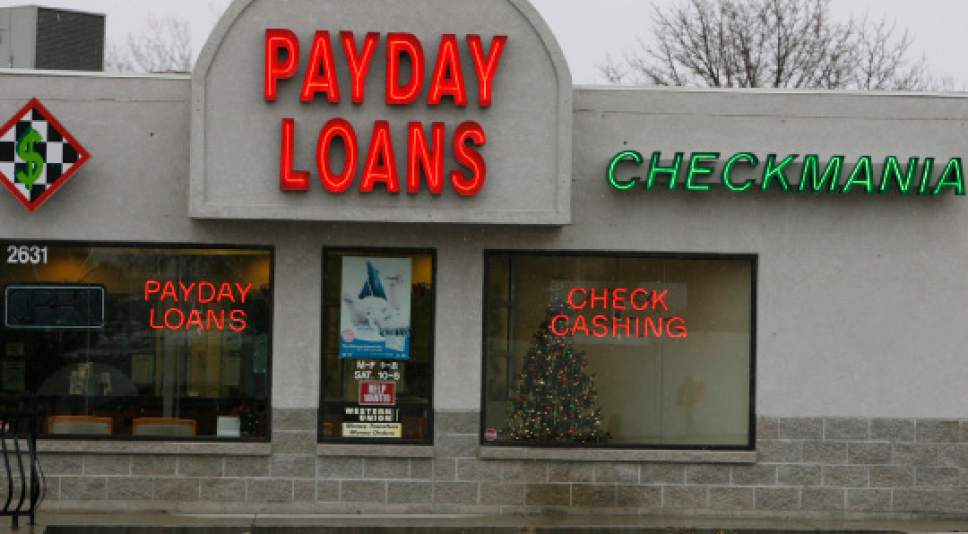This is an archived article that was published on sltrib.com in 2017, and information in the article may be outdated. It is provided only for personal research purposes and may not be reprinted.
Utah cities were among the nation's first to adopt ordinances limiting the number of payday lenders within their borders. But supporters now figure those efforts did little to slow an industry in which typical loans now charge 459 percent annual interest.
That's according to a new study by researchers Robert N. Mayer of the University of Utah and Nathalie Martin at the University of New Mexico.
The study looks at lessons learned by efforts to rein in payday lenders in Salt Lake County, Dallas and California's Silicon Valley.
Researchers included a case study of how 11 Salt Lake County communities passed ordinances to limit the numbers of payday lenders and how close they could be to one another.
"Utah has some of the earliest ordinances in the United States and the third most of any state, an unlikely distinction given Utah's conservative political environment," the study says. Cities became a target for action when the Legislature initially did little to regulate the lenders.
But, in the end, the study quotes activists who fought for those ordinances saying they likely accomplished little.
For example, Art Sutherland, president of the Coalition of Religious Communities, said there are still so many payday lender stores that obtaining a loan is easy, if a borrower is willing to drive a bit.
"It may be a little hard to shop around because you are going to need a car instead of being able to walk from one store to another," he said. But borrowers still are able "to take out a loan from one guy to pay off the loan from another guy and pretty soon have to take out a loan from another guy to pay that off."
There are 553 loan stores in Utah that make payday loans or title loans in the state, according to the state. That tops the number of McDonald's, Burger King, Wendy's and Subway restaurants in Utah combined.
Christopher Peterson, a University of Utah law professor who is a leading critic of payday lenders and was a force behind ordinances that limited them, also said these local regulations probably had little effect on the industry overall.
"They don't really decrease the volume of lending," he said in the study. "They create an illusion of actually having done something when nothing has really been done, and that tends to demobilize political change."
A better strategy, perhaps, would include requiring high-interest lenders to have warning signs outside with messages such as, "Warning, predatory lender," he said.
The study quoted Wendy Gibson, spokeswoman for the payday loan industry's Utah Consumer Lending Association, saying the industry believes the ordinances have had virtually no effect on the industry.
Phillip Hill, Midvale assistant city manager, agreed.
He said the number of payday lenders in his community dropped from about a dozen to eight or nine in recent years, but believed that was not because of ordinances but because too many originally had located there for its population. He said he saw no signs that people who wanted the loans could not obtain them.
Still, the study said despite the pessimism, "the Utah ordinances were precedent setters." They were among the first in the nation to limit payday-loan stores by population, and set minimum distances between them.
Activists told researchers the ordinances may also have helped lead to greater state-level regulation of payday lenders by the Legislature in recent years, including such things as requiring lenders to offer an interest-free payback plan for loans still unpaid after 10 weeks.
State reports say payday loans in Utah now charge an average of 459 percent annual interest — a rate that's nearly twice what academic studies say the New York Mafia in the 1960s charged, 250 percent.
Most payday loans are for two weeks, or until a borrower's next payday. Utah law allows renewing them for up to 10 weeks, after which no more interest may be charged.
But critics say the poor are often pressured to take out new loans to avoid legal action and fees over a default on the original, leading to spiraling debt.



